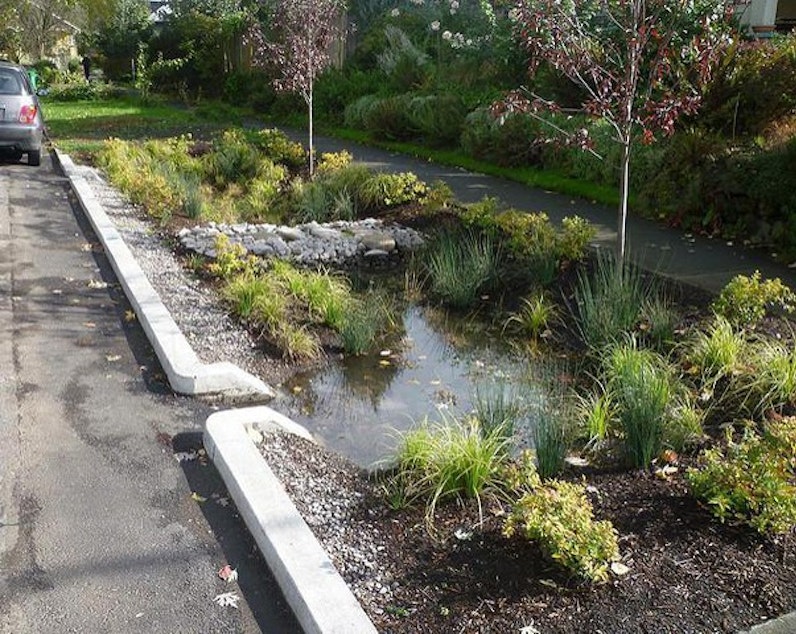Audit Flags Problems With Portland’s Environmental Agency

A "green street" project in Portland designed to absorb stormwater and prevent sewer backups and overflows.
A new audit finds problems with how the City of Portland is managing environmental restoration projects and “green streets” designed to control stormwater.
The Bureau of Environmental Services is spending millions on projects aimed at improving water quality, restoring wildlife habitat and preventing flooding, but auditors found the bureau often can’t prove those projects are meeting their goals.
This year, the bureau invested $13 million in restoration projects and green streets. The agency needs a better system for measuring the benefits of those investments, the auditors concluded.
"The Bureau cannot report on overall progress because there is no
inventory of restoration projects on which to base reporting, none of the projects we reviewed had quantifiable goals, and there are no protocols for consistent monitoring or data collection," the audit states.
Kaitlin Lovell, science integration division manager for the Bureau of Environmental Services, said the bureau has plenty of evidence that its restoration projects have been successful.
"We know they have been effective by having salmon swimming in urban streams and by having a swimmable Willamette River," she said."What they’re asking us to do is to be more quantifiable – to really demonstrate we are getting a return on our investment in a much more tangible way, and we think we can do that."
Lovell said the bureau agrees with the audit's conclusions and plans to collect more data at the beginning of its restoration projects to help measure the benefits over time.
The city's "green streets" use plants alongside roads to absorb stormwater and prevent sewer backups and overflows. But auditors found the bureau doesn’t have a way of determining where they're most needed or how well they’re working. Plus, it's failing to inspect and maintain them.
The audit reports 36 percent of the city’s green streets are outside the areas with the highest risk of sewer backups and overflows. The bureau is supposed to maintain green streets at least three or four times a year, but auditors found 40 percent of them didn't meet that standard in 2017.
"The Bureau cannot demonstrate to ratepayers or regulators that
the $1 million it spends annually on green street maintenance
kept them in functioning condition," the audit concludes.
Commissioner Nick Fish and Bureau Director Michael Jordan submitted a written response to the eight recommendations in the audit, noting that efforts are already underway to develop stormwater risk maps and a new program for maintaining green streets by the spring of 2019.
"We agree with the auditor’s findings," Lovell said. "And we are changing our ongoing maintenance and monitoring of green streets so we can demonstrate when green streets are effective and when they become not effective."
The bureau also has a new interactive online tool scheduled to be released next year that will analyze and forecast the individual and cumulative impacts to salmon from habitat restoration projects implemented from 2003 and 2018. [Copyright 2018 EarthFix]



